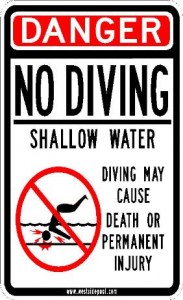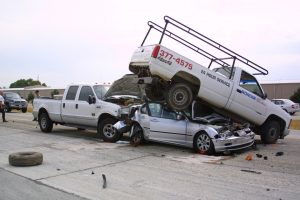 Millions of workers drive or ride in a motor vehicle as part of their jobs. And, motor vehicle crashes are the leading cause of work-related deaths in the U.S. The type of company or job doesn’t matter — the risk is there.
Millions of workers drive or ride in a motor vehicle as part of their jobs. And, motor vehicle crashes are the leading cause of work-related deaths in the U.S. The type of company or job doesn’t matter — the risk is there.
Eye Safety at Home
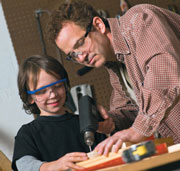 Believe it or not, the average home is full of dangers that often go unnoticed. In fact, accidents involving common household products cause 125,000 eye injuries each year.
Believe it or not, the average home is full of dangers that often go unnoticed. In fact, accidents involving common household products cause 125,000 eye injuries each year.
Ninety percent of these eye injures can be prevented through understanding, safety practices and the use of proper eye protection.
Three Essential Elements of Effective Workplace Health & Safety Programs
 Organizational Culture and Leadership
Organizational Culture and Leadership
- Develop a “Human Centered Culture.” Effective programs thrive in organizations with policies and programs that promote respect throughout the organization and encourage active worker participation, input, and involvement. A Human Centered Culture is built on trust, not fear.
- Demonstrate leadership. Commitment to worker health and safety, reflected in words and actions, is critical. The connection of workforce health and safety to the core products, services and values of the company should be acknowledged by leaders and communicated widely. In some notable examples, corporate Boards of Directors have recognized the value of workforce health and wellbeing by incorporating it into an organization’s business plan and making it a key operating principle for which organization leaders are held accountable.
- Engage mid-level management. Supervisors and managers at all levels should be involved in promoting health-supportive programs. They are the direct links between the workers and upper management and will determine if the program succeeds or fails. Mid level supervisors are the key to integrating, motivating and communicating with employees.
via CDC – Essential Elements of Effective Workplace Programs – NIOSH Total Worker Health.
Make Summer Safe for Kids
Avoid Hearing Loss
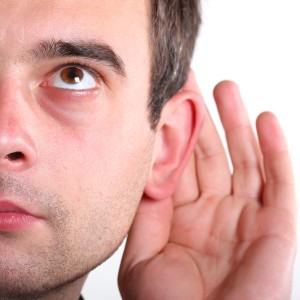 Loud noise at work can damage hearing. Approximately 22 million U.S. workers are exposed to hazardous noise at work. To minimize occupational noise-induced hearing loss, the National Institute for Occupational Safety and Health (NIOSH) recommends that workers should not be exposed to noise at a level that amounts to more than 85 decibels (dBA) for 8 hours.
Loud noise at work can damage hearing. Approximately 22 million U.S. workers are exposed to hazardous noise at work. To minimize occupational noise-induced hearing loss, the National Institute for Occupational Safety and Health (NIOSH) recommends that workers should not be exposed to noise at a level that amounts to more than 85 decibels (dBA) for 8 hours.
via NIOSH – Engineering Noise Control – Workplace Safety and Health Topic.
Danger – No Diving
- Don’t ever dive into shallow water. Before diving, inspect the depth of the water to make sure it is deep enough for diving. If diving from a high point, make sure the bottom of the body of water is double the distance from which you’re diving. For example, if you plan to dive from eight feet above the water, make sure the bottom of the body of water, or any rocks, boulders or other impediments are at least 16 feet under water.
- Never dive into above-ground pools.
- Never dive into water that is not clear, such as a lake or ocean, where sand bars or objects below the surface may not be seen.
- Only one person at a time should stand on a diving board. Dive only off the end of the board and do not run on the board. Do not try to dive far out or bounce more than once. Swim away from the board immediately afterward to make room for the next diver.
- Refrain from body surfing near the shore since this activity can result in cervical spine injuries, some with quadriplegia, as well as shoulder dislocations and shoulder fractures.
via Safety First – Before Diving into Summer Headfirst | Virginia Orthopaedic & Spine Specialists.
Workplace Back Injuries Cost Billions
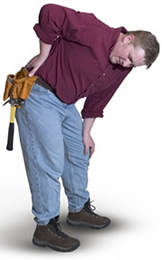 Preventing back injuries is a major workplace safety challenge. According to the Bureau of Labor Statistics, more than one million workers suffer back injuries each year, and back injuries account for one of every five workplace injuries or illnesses. Further, one-fourth of all compensation indemnity claims involve back injuries, costing industry billions of dollars on top of the pain and suffering borne by employees.
Preventing back injuries is a major workplace safety challenge. According to the Bureau of Labor Statistics, more than one million workers suffer back injuries each year, and back injuries account for one of every five workplace injuries or illnesses. Further, one-fourth of all compensation indemnity claims involve back injuries, costing industry billions of dollars on top of the pain and suffering borne by employees.
Make Water Safety a Priority
 Swim in designated areas supervised by lifeguards.
Swim in designated areas supervised by lifeguards.- Always swim with a buddy; do not allow anyone to swim alone. Even at a public pool or a lifeguarded beach, use the buddy system!
- Ensure that everyone in the family learns to swim well. Enroll in age-appropriate Red Cross water orientation and Learn-to-Swim courses.
- Never leave a young child unattended near water and do not trust a child’s life to another child; teach children to always ask permission to go near water.
- Have young children or inexperienced swimmers wear U.S. Coast Guard-approved life jackets around water, but do not rely on life jackets alone.
- Establish rules for your family and enforce them without fail. For example, set limits based on each person’s ability, do not let anyone play around drains and suction fittings, and do not allow swimmers to hyperventilate before swimming under water or have breath-holding contests.
- Even if you do not plan on swimming, be cautious around natural bodies of water including ocean shoreline, rivers and lakes. Cold temperatures, currents and underwater hazards can make a fall into these bodies of water dangerous.
- If you go boating, wear a life jacket! Most boating fatalities occur from drowning.
- Avoid alcohol use. Alcohol impairs judgment, balance and coordination; affects swimming and diving skills; and reduces the body’s ability to stay warm.
via Water Safety Information | Tips for Kids & Adults | American Red Cross.
Saving Sudden Cardiac Arrest Victims at Work
 There are 220,000 victims of sudden cardiac arrest per year in the United States; about 10,000 sudden cardiac arrests occur at work.
There are 220,000 victims of sudden cardiac arrest per year in the United States; about 10,000 sudden cardiac arrests occur at work.
Waiting for the arrival of emergency medical system personnel results in only 5-7% survival.
Studies with immediate defibrillation have shown up to 60% survival one year after sudden cardiac arrest.
Automated external defibrillators
An automated external defibrillator (AED) is a medical device designed to analyze the heart rhythm and deliver an electric shock to victims of ventricular fibrillation to restore the heart rhythm to normal. Ventricular fibrillation is the uncoordinated heart rhythm most often responsible for sudden cardiac arrest.
Sudden cardiac arrest
Sudden cardiac arrest occurs when ventricular fibrillation takes place or when the heart stops beating altogether. Without medical attention, the victim collapses, loses consciousness, becomes unresponsive, and dies. Many victims have no prior history of heart disease and are stricken without warning.
Causes of sudden cardiac arrest
- Heart attack
- Electrocution
- Asphyxiation (loss of consciousness and death caused by inadequate oxygen in the work environment, such as in a confined space).
Reasons for AEDs in the workplace
- Workers may suffer sudden cardiac arrest while on the job.
- Onsite AEDs save precious treatment time, and can improve survival odds because they can be used before emergency medical service (EMS) personnel arrive.
- A heart rhythm in ventricular fibrillation may only be restored to normal by an electric shock.
- The AED is compact, lightweight, portable, battery operated, safe, and easy to use.
Placement of AEDs
- AEDs should be conveniently installed to ensure response within 3-5 minutes.
- Areas where many people work closely together, such as assembly lines and office buildings.
- Close to a confined space.
- Areas where electric-powered devices are used.
- Outdoor worksites where lightning may occur.
- Health units where workers may seek treatment for heart attack symptoms.
- Company fitness units and cafeterias.
- Remote sites, such as off-shore drilling rigs, construction projects, marine vessels, power transmission lines, and energy pipe lines.
AED program cost
AEDs cost $1200-$3000 per device. Training, annual retraining, and administrative costs are additional.
AED training
Your workers can easily be trained to:
- Recognize sudden cardiac arrest and notify EMS personnel,
- Perform cardiopulmonary resuscitation (CPR),
- Provide early defibrillation with an AED, and
- Care for the victim until EMS personnel arrive.
Campfire Safety Tips for Kids
 Have you thought about a safer way to have a warm, crackling fire in your camping area? Smokey Bear has given seven tips for you and your parents to follow when you want a campfire. Always ask a parent to help you when around a fire because fires can be dangerous.
Have you thought about a safer way to have a warm, crackling fire in your camping area? Smokey Bear has given seven tips for you and your parents to follow when you want a campfire. Always ask a parent to help you when around a fire because fires can be dangerous.
- Dig a small pit away from overhanging branches. Most parks have campfire pits ready and waiting for you.
- Circle the pit with rocks or be sure it already has a metal fire ring.
- Clear a five-foot area around the pit down to the soil.
- Keep a bucket of water and a shovel nearby.
- Stack extra wood upwind and away from the fire.
- After lighting, do not discard the match until it is cold.
- Never leave a campfire unattended, not even for a minute.


